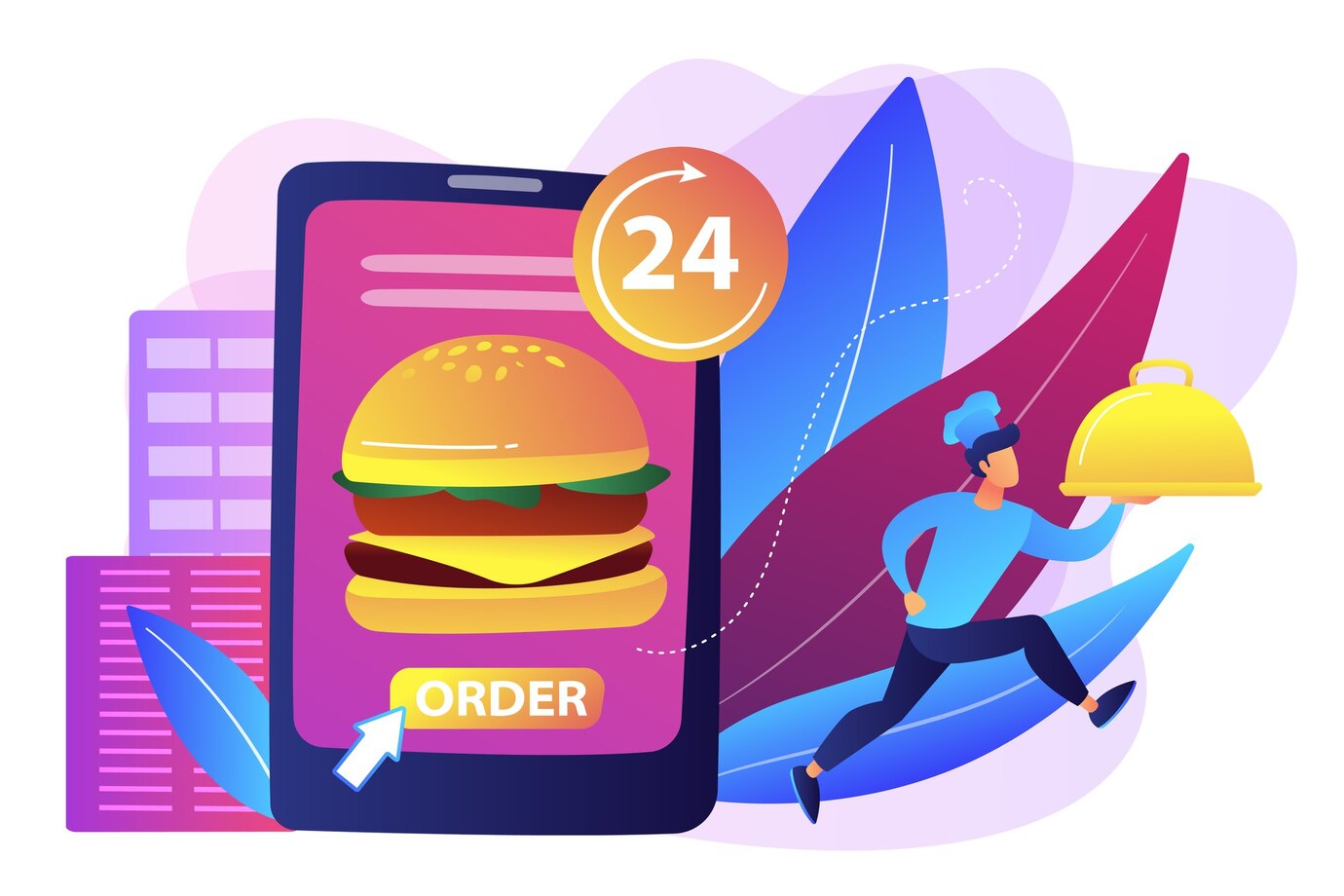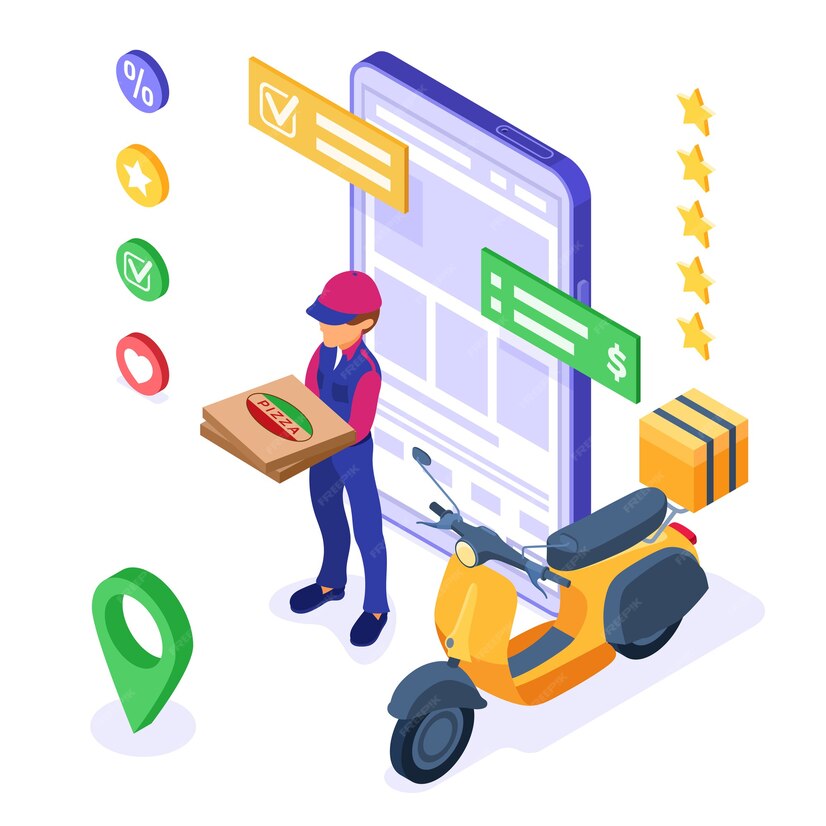Building Your Own Mobile Delivery App: Step-by-Step Guide
Developing a mobile delivery app can be a profitable and relevant business concept, especially with the increase in demand for on-demand services. Food, groceries, deliveries, or general courier services can all be delivered by a well-designed app that draws and keeps a sizable user base. However, to build a delivery app from scratch calls for meticulous preparation, technical know-how, and a strong implementation plan. A successful app requires careful attention to user experience, scalability, and key features that ensure smooth and efficient operations for both users and delivery personnel.
Step 1: Define your app’s purpose and audience.
Clearly defining the goal of your delivery app is crucial before you start developing it. What kind of services are you going to offer? A few typical delivery app categories are as follows:
- Food delivery (e.g., DoorDash, UberEats)
- Grocery delivery (e.g., Instacart, BigBasket)
- Courier and parcel delivery (e.g., Postmates, Swiggy Genie)
- E-commerce and product delivery (e.g., Amazon, Flipkart)
Once you decide on the niche, identify your target audience. Consider factors like location, age, income level, and technology proficiency to help tailor the app’s design and features to meet their needs.
Step 2: Research Competitors
It’s essential to research your competition if you want your app to stand out in the competitive market. Examine well-known apps in your industry to determine what functions well and what doesn’t. Take a look at their customer reviews to see areas where they could improve or where their service is lacking. Your app will have a competitive edge thanks to this research’s assistance in developing your unique selling proposition (USP).
Step 3: Choose the Right Business Model
There are several business models you can adopt depending on your delivery app’s purpose:
- Single Vendor: If you’re developing the app for a specific business or restaurant.
- Multi-Vendor: Suitable for platforms that aggregate multiple businesses or restaurants, such as UberEats or Grubhub.
- Subscription or Commission-Based: Charge businesses or users for premium services, or take a percentage of each transaction made via the app.
Choose a model that aligns with your long-term goals, revenue streams, and market conditions.
Step 4: Define Key Features
You must incorporate features that provide a smooth user experience and effective delivery management into your delivery app if you want it to be successful. These are the essential components your app needs to have:
- User Registration/Login: Simple onboarding with options to log in using social media accounts, email, or phone numbers.
- Search and Browse Functionality: A search bar with filters to allow users to easily find the products or services they are looking for.
- Order Placement and Checkout: Easy-to-use order placement process with options to select delivery addresses and payment methods.
- Multiple Payment Options: Include digital wallets, credit/debit card payments, and cash-on-delivery to offer flexibility to users.
- Real-Time Order Tracking: GPS-based tracking that shows the order’s progress, from preparation to delivery.
- Ratings and Reviews: Allow users to review products and services, helping others make informed decisions and giving feedback to businesses.
- Push Notifications: Keep users updated on order statuses, special offers, and more through timely push notifications.
- Driver App Interface: If your delivery involves drivers or couriers, create a separate interface for them, enabling efficient task management and route optimization.
Step 5: Pick the Right Tech Stack
Your choice of tech stack will impact the app’s performance, scalability, and maintenance. For mobile app development, consider the following:
- Frontend Development: Tools like Flutter or React Native are ideal for building cross-platform mobile apps. These frameworks allow you to develop a single codebase that works for both Android and iOS.
- Backend Development: Consider using scalable backend frameworks like Node.js or Django. Cloud-based services like AWS or Google Cloud offer reliable storage and computing power.
- Database: For storing user data, orders, and other information, you can use databases like MySQL, PostgreSQL, or MongoDB.
- APIs: Integrate third-party APIs for services such as real-time GPS tracking, payment processing (e.g., Stripe, PayPal), and SMS notifications.
Step 6: Design the User Interface (UI) and User Experience (UX)
The app’s success heavily depends on how users interact with it. Keep your UI/UX design simple, intuitive, and user-friendly. Key points to consider:
- Minimalist Design: Avoid clutter. Use clean layouts, simple navigation, and a consistent design theme.
- Fast Loading Time: Ensure that pages load quickly to minimize bounce rates.
- Mobile-First: Optimize the app for mobile screens. Test the design on multiple devices to ensure a seamless experience.
You can use tools like Figma or Adobe XD to prototype and test the app’s design before development.
Step 7: Develop and Test the App
Once you have your designs ready, it’s time to start development. Work closely with a team of experienced developers to ensure that the app is built efficiently and bug-free.
Testing: Testing is crucial to identify and fix issues before the app goes live. Conduct both manual and automated testing to check for functionality, security, and performance across different devices and operating systems.
- Unit Testing: To ensure that individual components work as expected.
- Integration Testing: To make sure different app components work together seamlessly.
- User Acceptance Testing (UAT): Gather feedback from real users to ensure the app meets their expectations.
Step 8: Launch and Market Your App
Once the app has been tested and polished, you’re ready to launch! Submit the app to the Google Play Store and Apple App Store after ensuring it meets the necessary guidelines and requirements.
Marketing: A well-planned marketing campaign is essential for a successful app launch. Use the following strategies:
- Social Media Marketing: Promote your app on popular social platforms like Instagram, Facebook, and Twitter.
- Search Engine Optimization (SEO): Optimize your app’s description and website to rank higher in search results.
- App Store Optimization (ASO): Use relevant keywords in your app’s title, description, and tags to improve visibility.
- Influencer Marketing: Collaborate with influencers to promote your app and reach a larger audience.
Step 9: Collect Feedback and Iterate
It’s critical to collect user feedback via app reviews, polls, and analytics after launch. Update your software often to incorporate new features, address issues, and enhance functionality in response to user input.
Conclusion
Developing your mobile delivery app is a fulfilling experience that calls for a combination of technological know-how, inventiveness, and meticulous preparation. You can develop a reliable, user-friendly delivery app that meets the needs of your target audience by following this step-by-step tutorial. In the competitive world of on-demand services, your app can succeed with the correct features, tech stack, and marketing.


